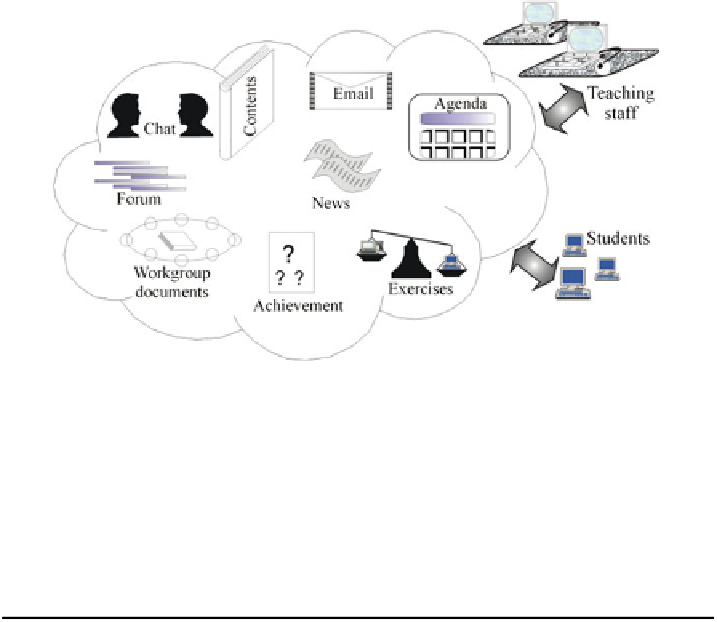Information Technology Reference
In-Depth Information
Fig. 7.5
E-learning facilities outline at UPA
Table 7.3 Dimensions of learning and teaching styles (Felder's model)
Preferred learning style
Corresponding teaching style
1
Sensory-intuitive
Perception
Concrete-abstract
Content
2
Visual-auditory
Input
Visual-verbal
Presentation
3
Inductive-deductive
Organization
Inductive-deductive
Organization
4
Active-reflective
Processing
Active-passive
Student participation
5
Sequential-global
Understanding
Sequential-global
Perspective
7.2.2 ICA Statement of the Problem
In order to solve the problem of detecting learning styles in e-learning, we defined
the following ICA generative model for the observed data.
x
¼
E
d
ð
7
:
5
Þ
We assume that the underlying independent sources that generate the web log data
are dimensions of the learning styles of the students, and we observe x linear combi-
nations of those styles through the use of the facilities at the virtual campus. Then,
d
i
; ð
i
¼
1
;
...
;
5 learning style dimension
Þ
corresponds to the ''perception'', ''input'',
''organization'', ''processing'', and ''understanding'' dimensions (see Table
7.3
);
and the mixture matrix E provides the relation between the e-learning style dimen-
sions and the e-learning event activities, e
ij
; ð
i
¼
1
;
...
;
5 learning style dimension
Þ;
ð
j
¼
1
;
...
;
10 e
learning activity
Þ
.
Some preprocessing was done; a datawarehouse was created from the historical
(2001-2005) web data of the UPA. The total number of events for the analyzed
period was 2,391,003 (see the list of e-learning event activities in
Sect. 7.2.1
). The
projection of this event table on the student codes was a table with 8,909 records.


Search WWH ::

Custom Search